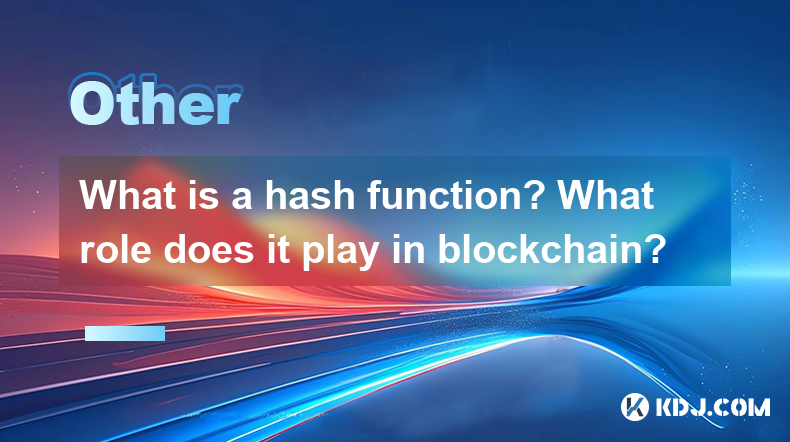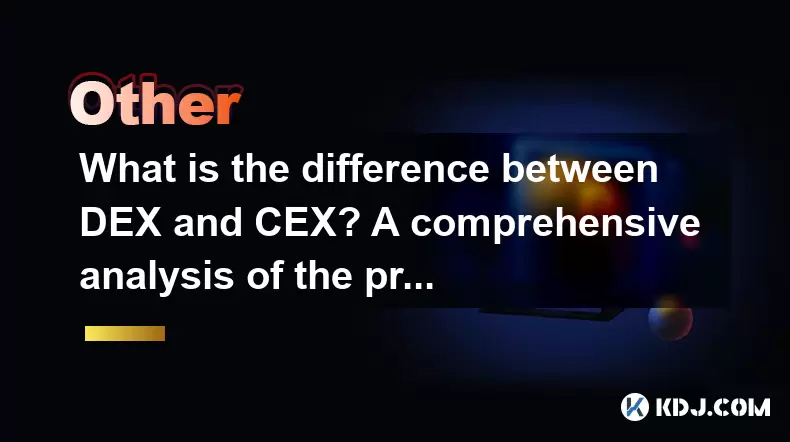-
 Bitcoin
Bitcoin $117,462.8204
-2.03% -
 Ethereum
Ethereum $3,061.1595
1.10% -
 XRP
XRP $2.9139
-2.19% -
 Tether USDt
Tether USDt $1.0002
0.02% -
 BNB
BNB $685.1357
-1.24% -
 Solana
Solana $161.3803
-2.11% -
 USDC
USDC $1.0002
0.04% -
 Dogecoin
Dogecoin $0.1948
-2.92% -
 TRON
TRON $0.2987
-0.89% -
 Cardano
Cardano $0.7330
-1.27% -
 Hyperliquid
Hyperliquid $47.7888
0.13% -
 Stellar
Stellar $0.4514
-2.93% -
 Sui
Sui $4.0169
2.74% -
 Chainlink
Chainlink $15.7088
-2.57% -
 Hedera
Hedera $0.2356
-3.33% -
 Bitcoin Cash
Bitcoin Cash $488.6656
-3.61% -
 Avalanche
Avalanche $21.2955
-1.47% -
 UNUS SED LEO
UNUS SED LEO $9.0415
0.42% -
 Shiba Inu
Shiba Inu $0.0...01332
-0.82% -
 Toncoin
Toncoin $3.0124
-0.62% -
 Litecoin
Litecoin $94.2175
-2.07% -
 Polkadot
Polkadot $4.0011
-0.61% -
 Monero
Monero $333.5714
-3.46% -
 Uniswap
Uniswap $9.1114
-1.56% -
 Dai
Dai $1.0000
0.02% -
 Ethena USDe
Ethena USDe $1.0005
0.00% -
 Bitget Token
Bitget Token $4.4951
1.87% -
 Pepe
Pepe $0.0...01242
0.47% -
 Aave
Aave $321.9943
0.51% -
 Bittensor
Bittensor $434.1984
5.13%
What is a hash function? What role does it play in blockchain?
Hash functions are crucial in blockchain for securing transactions, linking blocks, and ensuring data integrity through their deterministic and collision-resistant properties.
Apr 28, 2025 at 02:43 am

A hash function is a fundamental component of cryptographic systems, and it plays a crucial role in the operation of blockchain technology. At its core, a hash function is an algorithm that takes an input, or 'message,' and returns a fixed-size string of bytes, typically used as a digital fingerprint of the input data. This output, known as the hash value or hash code, is unique to each unique input, making it an essential tool for data integrity and security in the blockchain ecosystem.
The Mechanics of a Hash Function
A hash function operates by processing the input data through a series of mathematical operations, resulting in a seemingly random output. The key characteristics of a hash function include:
- Deterministic: Given a particular input, the hash function will always produce the same output.
- Quick Computation: The hash function should be able to generate the output quickly.
- Fixed Output Size: Regardless of the input size, the output hash value is always of a fixed length.
- One-way Function: It should be computationally infeasible to reverse-engineer the original input from the hash output.
- Collision Resistance: It should be extremely difficult to find two different inputs that produce the same hash output.
These properties make hash functions ideal for various applications within blockchain technology, such as securing transactions and maintaining the integrity of the blockchain.
Hash Functions in Blockchain
In the context of blockchain, hash functions serve several critical functions that underpin the security and functionality of the system. The most prominent role of hash functions in blockchain is in the creation of blocks and the maintenance of the blockchain's integrity.
Block Creation and Linking
Each block in a blockchain contains a list of transactions, a timestamp, and a reference to the previous block, known as the block header. The block header includes the hash of the previous block, which creates a chain of blocks linked by cryptographic hashes. This process is known as blockchain linking.
- The hash of the previous block is included in the current block's header.
- Any change to a block would alter its hash, which would then mismatch with the hash stored in the subsequent block, thereby breaking the chain.
This mechanism ensures that once a block is added to the blockchain, it cannot be altered without re-mining all subsequent blocks, which is computationally infeasible.
Transaction Integrity
Hash functions are also used to secure individual transactions within a block. Each transaction is hashed, and these hashes are combined to form a Merkle tree, a data structure that efficiently verifies the integrity of large datasets.
- Transactions are hashed individually.
- These hashes are then paired and hashed again, continuing until a single root hash is produced.
- The root hash is included in the block header, allowing for quick verification of all transactions within the block.
This method ensures that any alteration to a transaction would change the Merkle root, making it evident that the block has been tampered with.
Proof of Work and Mining
In proof-of-work (PoW) blockchains like Bitcoin, hash functions play a crucial role in the mining process. Miners compete to solve a complex mathematical puzzle, which involves finding a hash that meets certain criteria, typically a hash with a specific number of leading zeros.
- Miners take the block header and add a nonce (a number used only once).
- They hash the combination of the block header and nonce.
- If the resulting hash meets the difficulty target, the miner has successfully mined the block and is rewarded.
This process, known as proof of work, ensures that adding new blocks to the blockchain requires significant computational effort, thereby securing the network against attacks.
Data Privacy and Anonymity
Hash functions contribute to the privacy and anonymity of blockchain users by allowing for pseudonymous transactions. Public keys, which are derived from private keys using hash functions, are used to identify users on the blockchain.
- A user's private key is hashed to generate a public key.
- The public key is then hashed again to create a public address.
- Transactions are signed with the private key but are visible on the blockchain via the public address, maintaining user anonymity.
This system allows users to transact on the blockchain without revealing their real-world identities, enhancing privacy and security.
Smart Contracts and Hash Locks
In blockchain platforms that support smart contracts, such as Ethereum, hash functions are used to create hash locks, which are conditional payment mechanisms. A hash lock requires the recipient to provide a piece of data that, when hashed, matches a pre-agreed hash value before the funds can be released.
- A sender creates a hash of a secret value and includes it in the smart contract.
- The recipient must provide the secret value that, when hashed, matches the pre-agreed hash to unlock the funds.
This mechanism ensures that funds are only released when specific conditions are met, adding an additional layer of security and functionality to blockchain transactions.
Frequently Asked Questions
Q1: Can two different inputs produce the same hash output?
While theoretically possible, the probability of two different inputs producing the same hash output, known as a collision, is extremely low with a cryptographically secure hash function. For example, the SHA-256 hash function used in Bitcoin has a 256-bit output space, making collisions practically infeasible.
Q2: How does the choice of hash function affect the security of a blockchain?
The choice of hash function is critical to the security of a blockchain. A weak hash function could be vulnerable to attacks, such as finding collisions more easily, which could compromise the integrity of the blockchain. Therefore, blockchain networks typically use well-established, cryptographically secure hash functions like SHA-256 or Keccak-256.
Q3: Are there any alternatives to hash functions in blockchain technology?
While hash functions are the most commonly used cryptographic tool in blockchain, alternatives such as digital signatures and zero-knowledge proofs are also employed to enhance security and privacy. However, hash functions remain indispensable for their role in maintaining data integrity and linking blocks.
Q4: How does the hash function contribute to the immutability of the blockchain?
The hash function contributes to the immutability of the blockchain by creating a chain of blocks where each block's hash depends on the hash of the previous block. Any alteration to a block would change its hash, which would then mismatch with the hash stored in the subsequent block, making it evident that the blockchain has been tampered with. This interconnectedness ensures that once data is added to the blockchain, it is extremely difficult to alter.
Disclaimer:info@kdj.com
The information provided is not trading advice. kdj.com does not assume any responsibility for any investments made based on the information provided in this article. Cryptocurrencies are highly volatile and it is highly recommended that you invest with caution after thorough research!
If you believe that the content used on this website infringes your copyright, please contact us immediately (info@kdj.com) and we will delete it promptly.
- Solana Memecoins Hit the Big Time: PUMP and Sonic Get Coinbase Listing Boost!
- 2025-07-16 06:50:12
- Core Foundation's Rev+: Fueling Ecosystem Growth Through Revenue Sharing
- 2025-07-16 06:30:17
- Ripple, California, and Collaboration: A New Era for Crypto?
- 2025-07-16 06:30:17
- Roman Storm, DPRK Hackers, and Prosecutors: A Tangled Web
- 2025-07-16 06:50:12
- Bitcoin, Altcoins, and DeFi: Navigating the Evolving Crypto Landscape
- 2025-07-16 05:30:12
- DeFi Demystified: Navigating the Wild West of Decentralized Finance
- 2025-07-16 04:50:12
Related knowledge

What is an oracle in blockchain? Detailed explanation of its role
Jun 21,2025 at 06:14am
Understanding the Concept of an Oracle in BlockchainIn the realm of blockchain technology, an oracle is a trusted third-party service that connects sm...

Does token destruction affect prices? Case study
Jun 22,2025 at 02:50am
Understanding Token DestructionToken destruction, commonly referred to as token burning, is a process where a portion of cryptocurrency tokens is perm...

What is a blockchain node? Popular science on the operating principle
Jun 22,2025 at 11:00pm
Understanding the Basics of a Blockchain NodeA blockchain node is essentially a computer connected to a blockchain network that participates in valida...

What is the difference between DEX and CEX? A comprehensive analysis of the pros and cons
Jun 24,2025 at 09:42am
What is a DEX (Decentralized Exchange)?A DEX, or Decentralized Exchange, operates without a central authority. Unlike traditional platforms, DEXs allo...

What is zero-knowledge proof? Key privacy protection technology
Jun 22,2025 at 07:29pm
Understanding Zero-Knowledge ProofZero-knowledge proof (ZKP) is a cryptographic method that allows one party to prove to another party that they know ...

What can a blockchain browser check? A practical function guide
Jun 20,2025 at 07:35pm
Understanding the Role of a Blockchain BrowserA blockchain browser serves as a powerful tool for anyone interacting with blockchain networks. It allow...

What is an oracle in blockchain? Detailed explanation of its role
Jun 21,2025 at 06:14am
Understanding the Concept of an Oracle in BlockchainIn the realm of blockchain technology, an oracle is a trusted third-party service that connects sm...

Does token destruction affect prices? Case study
Jun 22,2025 at 02:50am
Understanding Token DestructionToken destruction, commonly referred to as token burning, is a process where a portion of cryptocurrency tokens is perm...

What is a blockchain node? Popular science on the operating principle
Jun 22,2025 at 11:00pm
Understanding the Basics of a Blockchain NodeA blockchain node is essentially a computer connected to a blockchain network that participates in valida...

What is the difference between DEX and CEX? A comprehensive analysis of the pros and cons
Jun 24,2025 at 09:42am
What is a DEX (Decentralized Exchange)?A DEX, or Decentralized Exchange, operates without a central authority. Unlike traditional platforms, DEXs allo...

What is zero-knowledge proof? Key privacy protection technology
Jun 22,2025 at 07:29pm
Understanding Zero-Knowledge ProofZero-knowledge proof (ZKP) is a cryptographic method that allows one party to prove to another party that they know ...

What can a blockchain browser check? A practical function guide
Jun 20,2025 at 07:35pm
Understanding the Role of a Blockchain BrowserA blockchain browser serves as a powerful tool for anyone interacting with blockchain networks. It allow...
See all articles

























































































